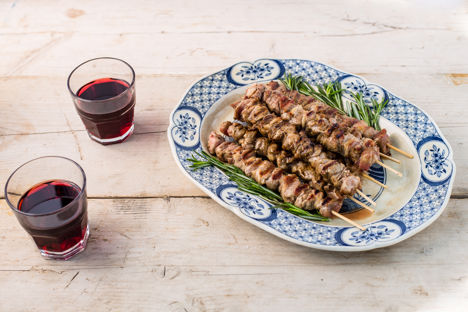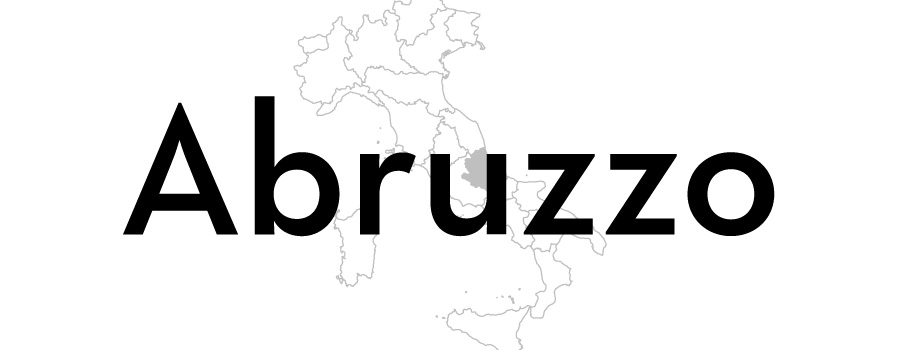
Abruzzo’s best lamb dishes
In the mountains of Abruzzo, shepherds rear some of the finest lamb in all of Italy. Take a look at some of the region’s most famous lamb dishes and get a taste for the local cuisine.
Agnello (lamb) finds its way into many of Italy’s regional cuisines, but in Abruzzo – one of central Italy’s most beautiful areas – it’s a vital and important part of the food culture. Shepherds have raised flocks of sheep in the hills and mountains for millennia, and their meat has formed a key part of Abruzzese cuisine.
What makes Abruzzese lamb (the majority of which is IGP-protected) so special is the environment the lambs are reared in. They’re often left to graze in the wild, rather than being confined to fields, which means their diet is more varied as they feast on the bounty of herbs and plants found in Abruzzo (barley and broad beans are a favourite). While the sheep reared in nearby regions such as Umbria and Le Marche tend to be heavier with a higher fat content, Abruzzese lamb is leaner, pinker and with a milder, subtler taste. This is what makes eating lamb in Abruzzo such a fantastic experience; especially when the chef prepares a traditional regional speciality.
Abruzzo’s lamb dishes are often incredibly simple, allowing the sweet taste of the lamb meat to shine through. Whether it’s grilled over coals, braised in white wine or made into a delicious ragù, the recipes and dishes below are some of the region’s most famous. Learn more about them and try cooking them yourself at home.
Arrosticini
Arguably Abruzzo’s most iconic dish, arrosticini might at first sound a little plain – small chunks of lamb threaded on skewers seasoned with nothing more than salt, pepper, olive oil and a little rosemary. But of course, as with any Italian food, there’s beauty in the simplicity. Stripping chunk after chunk of soft, tender lamb from the skewer using your teeth is incredibly satisfying, and in Abruzzo the average person can get through dozens of them alongside a few glasses of Montepulciano d’Abruzzo red wine and pickled vegetables. Traditionally the skewers should be cooked on a fornacella a type of elongated barbecue that imparts a smoky flavour, but you can cook them on a smoking hot griddle pan if there’s no Italian sunshine where you are. The key to keeping the meat moist is to ensure about a quarter of it is fat.
Agnello cacio e ova
Lamb, cheese and eggs – not a combination you see every day. But this festive dish (usually cooked around Easter, hence the eggs and lamb) is surprisingly tasty. Once the chunks of lamb have been gently cooked with onions, herbs and plenty of white wine until nice and tender, a combination of beaten eggs and Abruzzese pecorino are poured over the top and very gently cooked until the eggs begin to set (a lot like a carbonara sauce). The final plate might not be the prettiest looking thing in the world, but it’s rich, full of flavour and offers something a little different.
Coratella
High up in the Abruzzese mountains, where the cucina povera of the region is at its strongest, you’ll find coratella, a dish not for the faint-hearted. It’s a simple mix of minced lamb and minced lamb offal, fried in a little oil until browned, and seasoned with little more than salt, pepper, garlic, a little white wine, herbs (usually thyme, parsley and basil) and onion. It’s wild, rustic and very traditional – the offal includes everything, from the spleen to the lungs – but if you want to taste something that the people of central Italy relied upon up in the mountains, there’s nothing more authentic.
Lamb ragù
Of course, access to lots of lamb means the Abruzzese often turn it into a ragù to serve with their local pasta, pasta alla chitarra. The mince is cooked in the usual way with a soffrito and usually a little pancetta, as well as some chopped tomatoes. However, what makes this pasta sauce distinctly Abruzzese is the addition of red bell peppers and diavolino, the region’s famous chilli. The sweet heat of the peppers cuts through the fatty lamb beautifully, making this one of Italy’s most delicious (and underrated) ragùs.
Agnello brasato
For a typical Abruzzese secondi, lamb is often braised, roasted or stewed slowly over several hours until beautifully tender and falling off the bone. It’s usually cooked with plenty of garlic, diced pancetta and herbs, with a few of the region’s ubiquitous chilli peppers for a little kick of heat. Any sauce will be based on tomatoes and wine (usually white), and when it’s served at the table many Abruzzese will drizzle a tiny bit of chilli oil over the top for some extra warmth.



